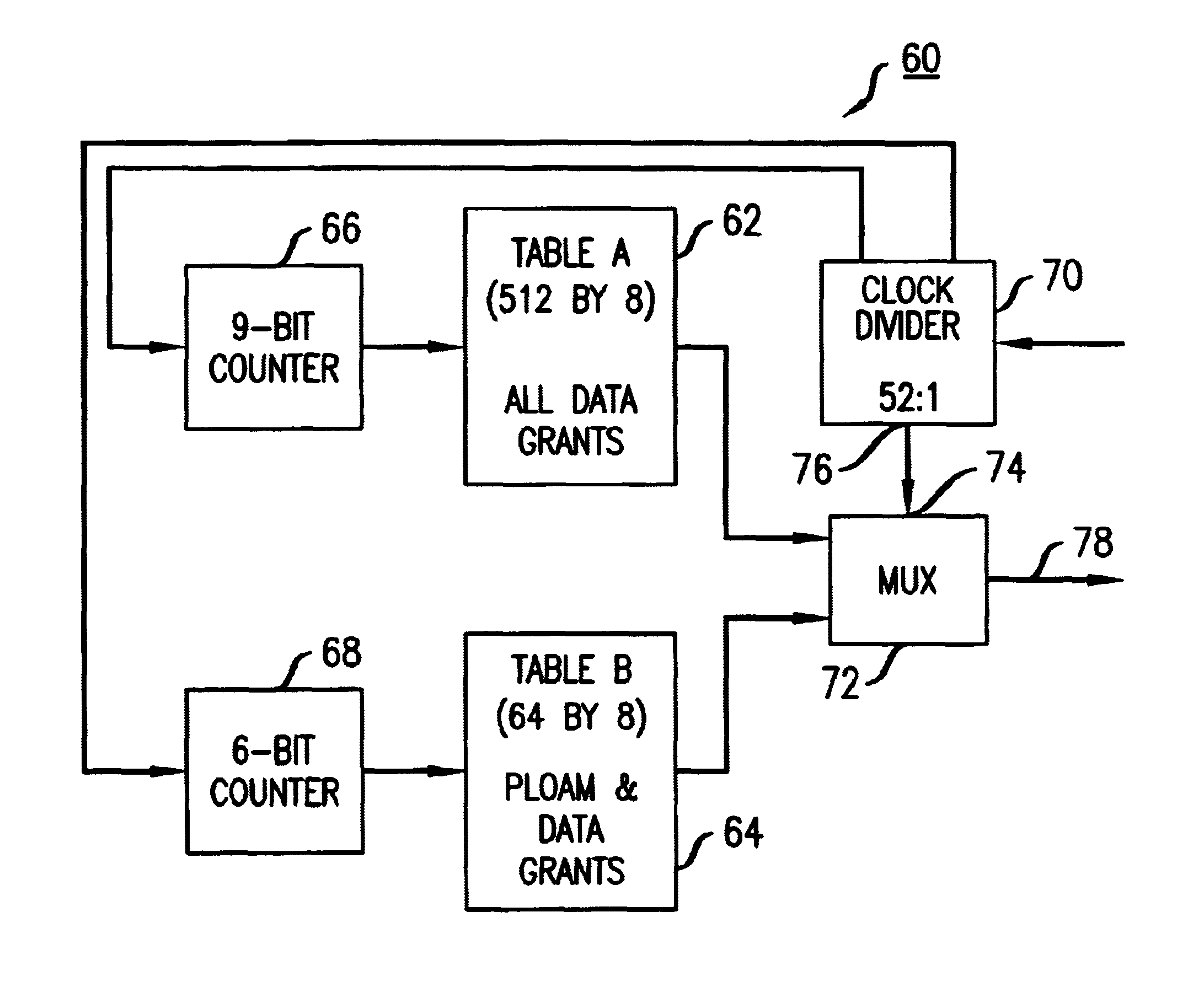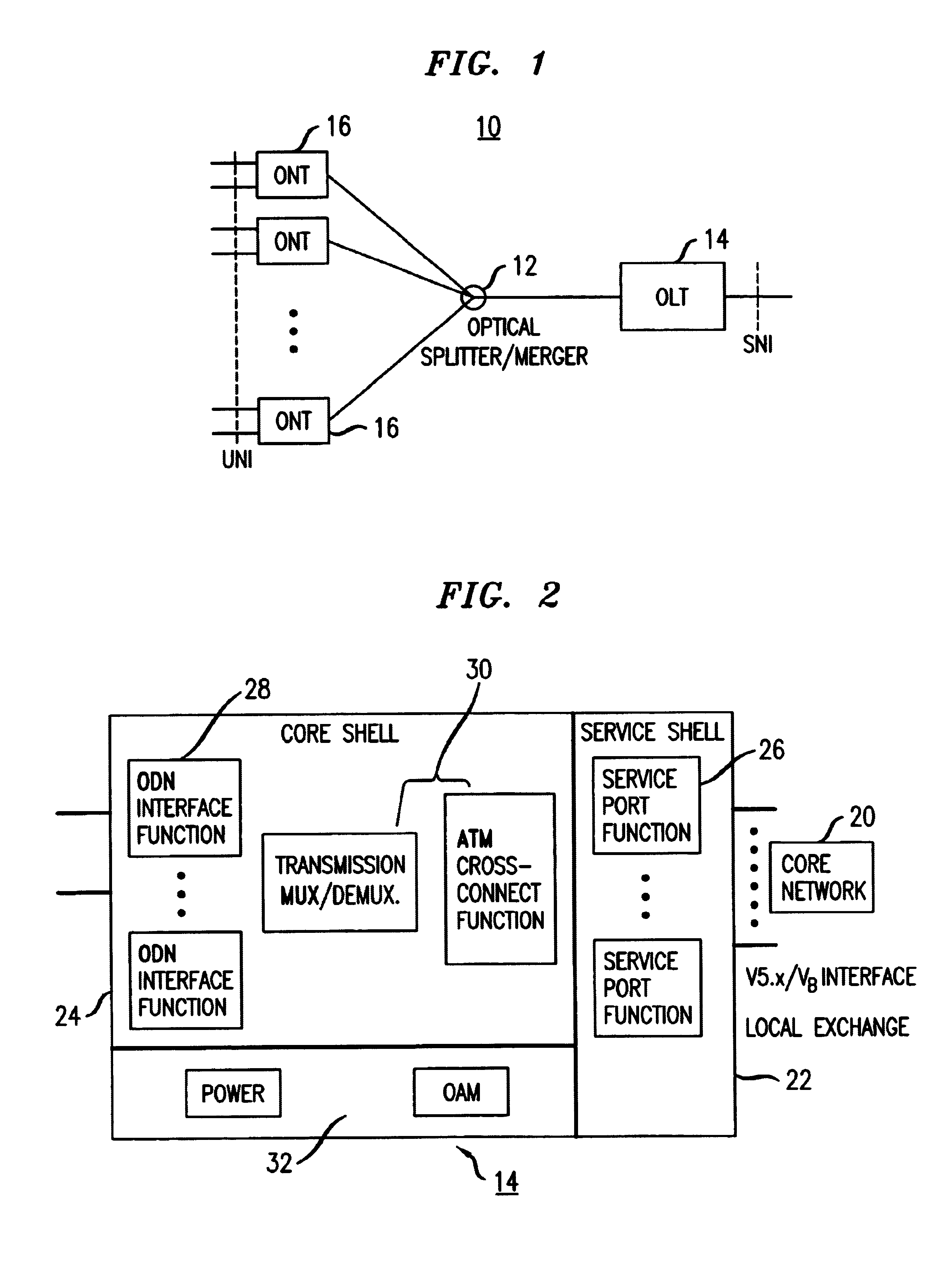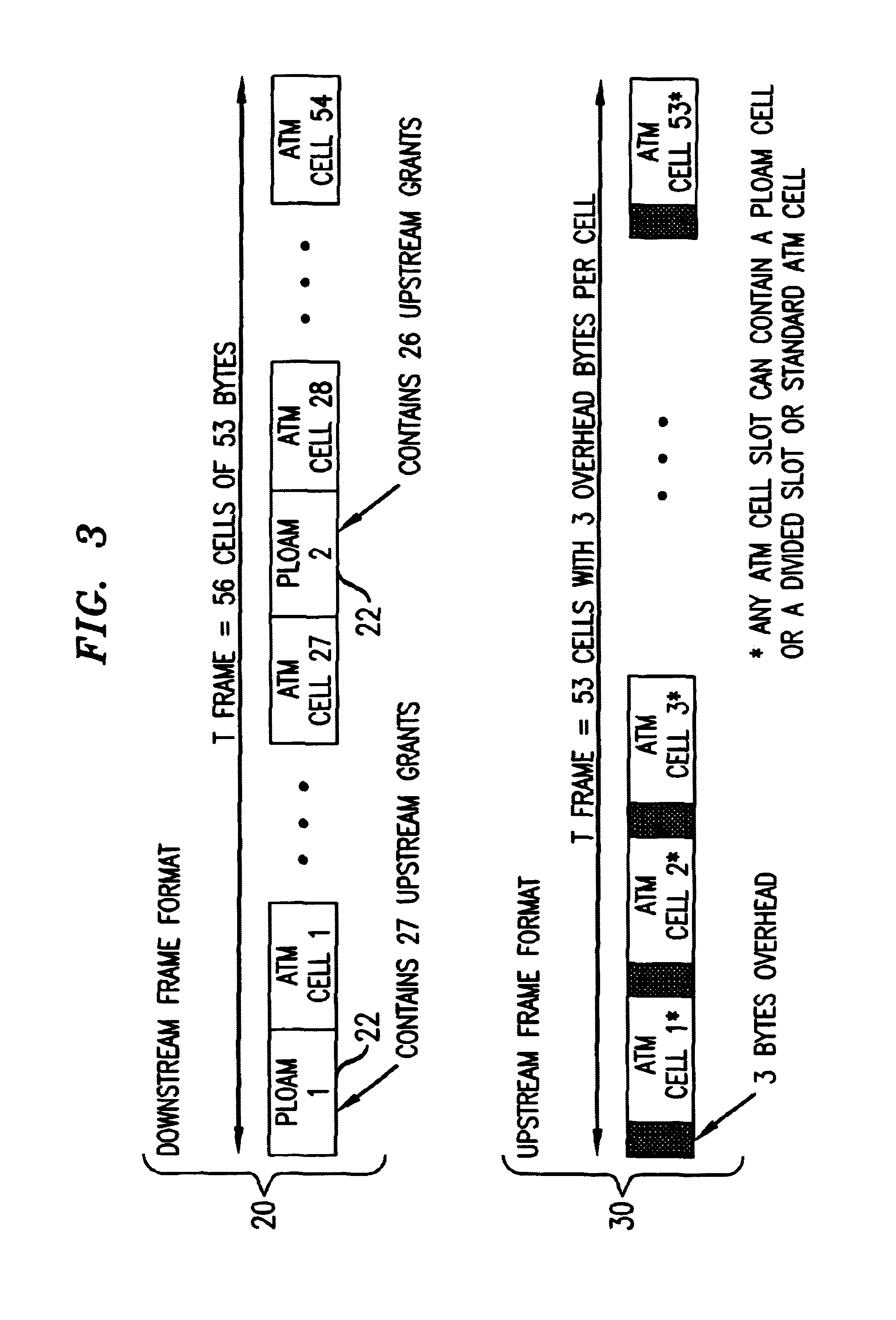Multi-table based grant generator for improved granularity in an ATM-PON
a grant generator and multi-table technology, applied in the field of atm communication systems, can solve the problems of unsuitably low performance, large overhead associated with computer logic controlled grant generation techniques, and unsuitable low performance, and achieve the effects of improving granularity, reducing overhead, and improving granularity
- Summary
- Abstract
- Description
- Claims
- Application Information
AI Technical Summary
Benefits of technology
Problems solved by technology
Method used
Image
Examples
Embodiment Construction
[0016]Asynchronous Transfer Mode-Passive Optical Networks (ATM-PONs) are being used in fiber-based access networks that are used to communicate with end-users in Fiber-To-The-Home (FTTH) / Fiber-To-The-Building (FTTB) environments. FIG. 1 shows an exemplary ATM-PON 10 configured in a basic tree topology. A passive optical splitter / merger 12 couples to a single Optical Line Termination (OLT) unit 14 in an upstream direction and to multiple Optical Network Termination (ONT) units 16 in a downstream direction. The passive optical splitter / merger 12 provides broadcasting in the downstream direction and merging in the upstream direction. In the exemplary ATM-PON shown in FIG. 1 and in accordance with ITU-T Recommendations G.983-1 and 983-2, part of the Full Services Access Networks (FSAN) initiative, the OLT 14 provides the network-side interface of the optical access network, while the ONTs 16 provide the customer-side interface to the optical access network.
[0017]Referring to FIG. 2, a f...
PUM
 Login to View More
Login to View More Abstract
Description
Claims
Application Information
 Login to View More
Login to View More - R&D
- Intellectual Property
- Life Sciences
- Materials
- Tech Scout
- Unparalleled Data Quality
- Higher Quality Content
- 60% Fewer Hallucinations
Browse by: Latest US Patents, China's latest patents, Technical Efficacy Thesaurus, Application Domain, Technology Topic, Popular Technical Reports.
© 2025 PatSnap. All rights reserved.Legal|Privacy policy|Modern Slavery Act Transparency Statement|Sitemap|About US| Contact US: help@patsnap.com



